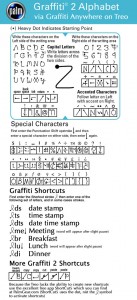Back in 2008 I theorized that it would be just a few years before voice commands revolutionized marketing and commerce. Not necessarily for everyone, mind you, but most significantly for people who wouldn’t dream of using a keyboard, or even a smartphone!
My post, Leaping the chasm to a plugged-in construction site, predicted that voice recognition isn’t that far away, and is the only way that many professionals would benefit from the utility of digital networking and cloud computing — ranging from the “safety glasses and hard hats set,” to offshore oil technicians (were you listening BP?), and even to surgeons.

That was as an outsider in the digital voice space. After spending time “inside,” with my friends and co-workers at HarQen, I’m realizing that voice recognition isn’t the only way to make a big difference with these types of phone users. I’ve discovered that you can derive value simply from people talking into their phones and having these snippets turned into sharable assets.
In other words, I hadn’t considered original voice. Original voice can be thought of as voice “captured, stored and shared,” pretty much as-is.
HarQen believes The Original Voice Matters. I recently talked about their view, of how voice is the “original rich media,” at Ungeeked Elite. Here’s a post from last week, on the VoiceScreener blog, that helps to explain why the best voice recognition software still resides between our ears — and how HarQen is using voice asset management to give clients an impressive competitive advantage.
So I was wrong. But I’m even more excited now than I was then. I cannot wait to see what happens when voice asset management is commonly adopted. Although it might not be powered directly by voice recognition, there may be a plugged-in construction site after all, using speech in the way it was used in the days when the only construction sites were in barely habitable caves!
 Yesterday’s unveiling of the Apple tablet, which we now know is called the iPad, showed a device with a larger surface than the iPhone / iPod Touch. It allows for a better reading and video experience and provides improved ways to do things like manage emails and photographs. Largely unaddressed with this release is a far more important question: How will this multi-touch make me better at thinking and creating?
Yesterday’s unveiling of the Apple tablet, which we now know is called the iPad, showed a device with a larger surface than the iPhone / iPod Touch. It allows for a better reading and video experience and provides improved ways to do things like manage emails and photographs. Largely unaddressed with this release is a far more important question: How will this multi-touch make me better at thinking and creating?


 Forty years after putting a human on the moon, we’re faced with the same question we had that day: Now what? My vote is not moon colonization, or sending people to Mars. No, let’s do something really challenging — but arguably far more beneficial. Let’s finally deliver stellar mobile web experience.
Forty years after putting a human on the moon, we’re faced with the same question we had that day: Now what? My vote is not moon colonization, or sending people to Mars. No, let’s do something really challenging — but arguably far more beneficial. Let’s finally deliver stellar mobile web experience.